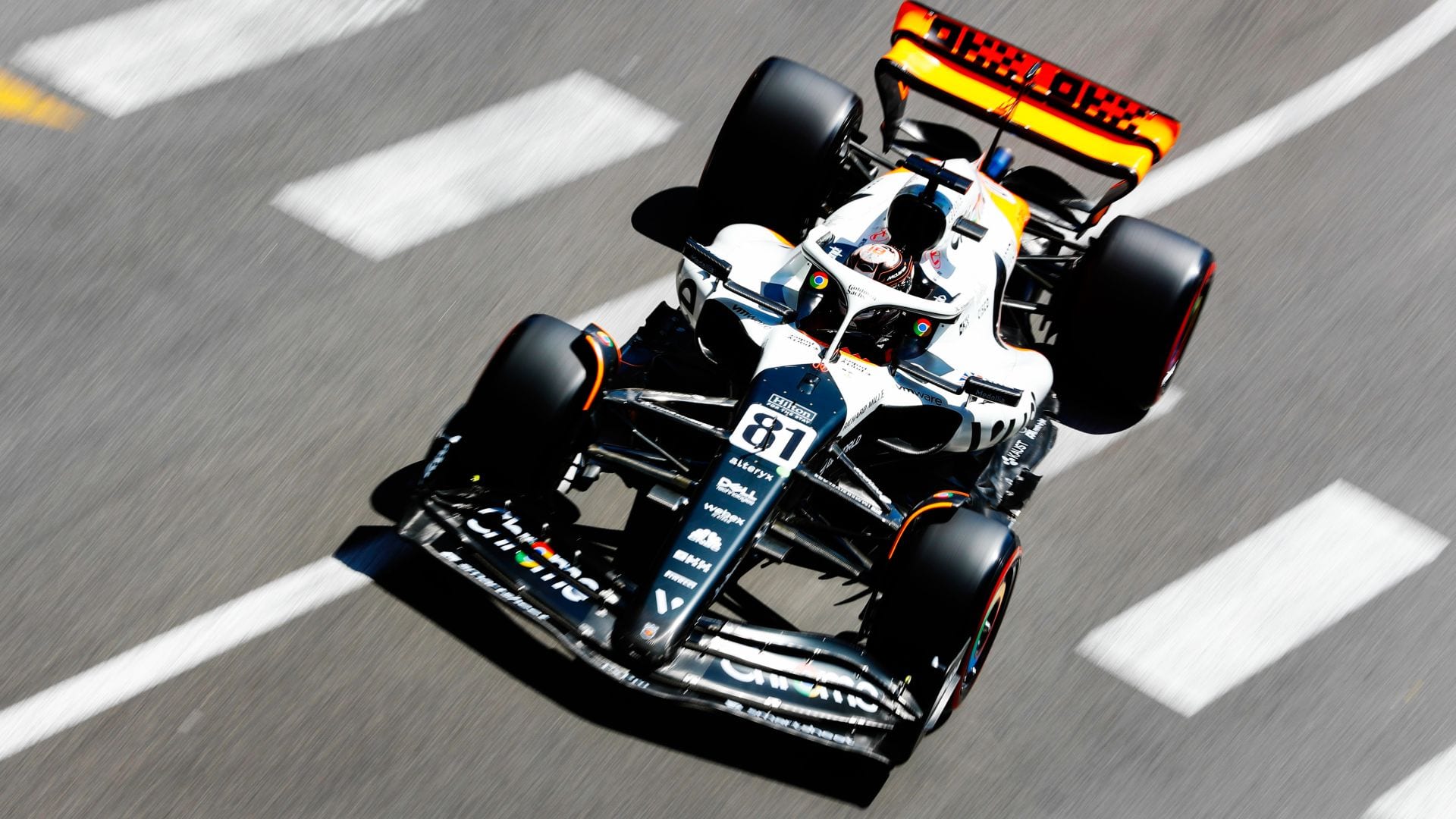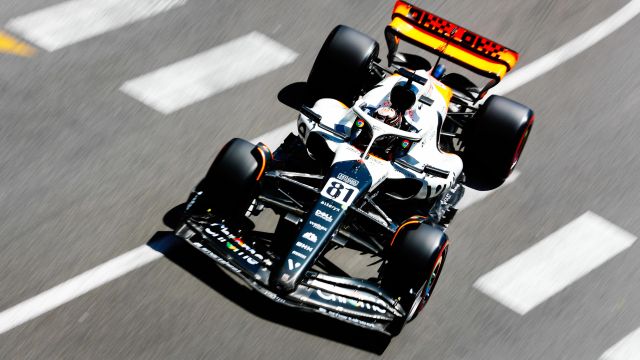Can Race Leader Use DRS In F1?


You, as an avid fan of Formula 1 racing, must have wondered at some point, “Can race leader use DRS in F1?” It’s a question that relates to the thrilling and strategic aspects of the sport, something that can make or break a race.
Yes, a race leader can use DRS (Drag Reduction System) in F1 if they are within one second of a car ahead in specific DRS zones. If the leading car has no lapped car within a second of them ahead, they are not allowed to use the DRS to defend their position in the race.
In this article, we will delve into the fascinating world of Formula 1 racing, focusing specifically on the use of DRS by the race leader. From understanding what DRS is and how it operates, to exploring the regulations that govern its use, this article aims to provide a comprehensive and engaging look at one of the most critical aspects of modern Formula 1 racing.
Understanding DRS in F1
The Drag Reduction System (DRS) is a technology employed in Formula 1 (F1) racing to aid drivers in overtaking by reducing the aerodynamic drag on their cars. The system revolves around utilising adjustable settings in the rear wing of the car, which can be altered to either reduce or increase downforce.
The rear wing plays a crucial role in generating downforce for an F1 car, providing better traction while navigating corners. When a driver activates DRS, it opens the rear wing flap, allowing air to flow more freely and reducing aerodynamic drag. This reduction in drag provides the car with a temporary boost in speed, aiding in closing the gap with the vehicle ahead or pursuing an overtake.
DRS can only be engaged in designated sections of the racetrack, known as DRS zones. These zones are primarily located on the straights, where a reduction in aerodynamic drag is most effective. To activate DRS, a driver must be within one second of the car ahead, as measured by electronic timing loops placed throughout the circuit.
Drivers activate DRS using a button on their steering wheel. Upon pressing the button, an actuator mechanism adjusts the rear wing flap, opening it up to reduce drag. Dash lights on the steering wheel provide real-time feedback, informing the driver when DRS is activated and deactivated.
While DRS provides numerous advantages during racing, it is essential to note that the system may only be used by drivers within one second of the car ahead, and solely in the designated DRS zones. As such, if a race leader is not within one second of a car in front, they cannot take advantage of the DRS system. Thus, the main objective of DRS remains to promote competitive racing and facilitate overtaking manoeuvres in Formula 1.
In conclusion, the DRS system plays a significant role in improving the spectacle of F1 racing. By allowing drivers to temporarily reduce the drag on their cars, DRS provides a valuable tool for drivers attempting to gain ground on their opponents.
Role of DRS in Overtaking
DRS, or Drag Reduction System, is an essential element in Formula 1 racing when it comes to overtaking. This system, introduced as an overtaking aid, enables drivers to gain an advantage in speed and reduces the impact of turbulent air, making it easier to pass other cars on the track.
At various points on a race circuit, there are designated DRS zones and activation zones. These zones are strategically placed on straights to maximise the potential for overtaking. The DRS system works by opening up the rear wing’s flap, reducing the car’s surface area and thus decreasing drag. This allows drivers to achieve an increase in straight-line speed, making passing on the straights more manageable.
However, there are rules governing the usage of the DRS system. For instance, a driver can only activate DRS if they are within a one-second gap of the opponent ahead. This slipstream effect helps the trailing driver to attack and attempt a successful pass during the race.
The number of DRS zones varies across different F1 tracks. While some tracks, like the Austrian Grand Prix, offer three DRS zones, others, such as the Monaco Grand Prix, have only one DRS zone on the start-finish straight. The placement of these zones can greatly influence the overall amount of passing and wheel-to-wheel racing during a race.
It is crucial to note that the race leader cannot use DRS unless they are behind cars getting lapped in a DRS zone. This restriction ensures that the DRS system is used primarily as an overtaking aid and does not provide an unfair advantage to those already leading the race.
In summary, the DRS system in Formula 1 racing plays a pivotal role in facilitating overtaking by allowing drivers to gain an increase in speed and reducing the impact of turbulent air. The strategic placement of DRS zones and activation zones contributes to exciting wheel-to-wheel action, keeping both the drivers and fans on the edge of their seats.
DRS Usage: Rules and Regulations
In Formula 1, the Drag Reduction System (DRS) serves as a critical tool for drivers while overtaking or increasing wheel-to-wheel racing. Governed by the Fédération Internationale de l’Automobile (FIA), DRS is subject to specific rules and regulations, ensuring fair and safe competition among teams.
At the beginning of each Grand Prix weekend, FIA race director officials assign designated DRS zones on the race circuit. Carefully evaluated and adjusted, these zones take into account the track layout and potential safety concerns. Generally, circuits feature one or two DRS activation zones.
During practice sessions and qualifying, drivers can freely use DRS within the designated zones, while in the race, its usage becomes restricted. A driver must follow another car within one second as they cross the DRS detection point to activate the system. Once they meet this criterion, they can engage DRS in the subsequent activation zone.
Notably, some instances restrict the use of DRS, even for race leaders. In particular, the FIA prohibits DRS usage for the first two laps after the race start or a safety car restart. Additionally, the race director holds the authority to disable DRS for all drivers if weather conditions are deemed unsafe.
To summarise, DRS provides drivers with strategic opportunities for overtaking during Formula 1 races. FIA officials enforce rules and designate zones on the circuit to ensure a level playing field and safe conditions for all teams. Ultimately, race leaders must adhere to the same regulations as all competitors in the activation and usage of DRS.
DRS in Different Formula Racing Series
The Drag Reduction System (DRS) is a revolutionary technology used in various motorsport series to enhance overtaking and promote exciting wheel-to-wheel racing. Primarily employed in Formula 1, DRS has also been utilised in Formula 2, Formula 3, and the Deutsche Tourenwagen Masters (DTM).
In Formula 1, the DRS works by opening a flap on the rear wing of a car when it is within one second of the car ahead at specific detection points. This process reduces the aerodynamic drag, enabling the pursuing car to gain an advantage in straight-line speed. However, it is important to note that the race leader can use DRS only if they are within the one-second range of a backmarker, not another race leader.
Formula 2, the primary feeder series to Formula 1, also adopts DRS technology, with similar rules and principles. While the overall objective is the same as in Formula 1, the DRS zones and detection points may differ in layout and number between the two series, as they are adapted to each circuit.
Similarly, Formula 3 implements DRS to elevate competition among the drivers, though there are fewer DRS zones per circuit compared to the higher tiers such as Formula 1 and Formula 2. This limitation encourages the young drivers to polish their overtaking skills and showcase their racecraft.
In contrast to the single-seater series, DTM, a touring car racing championship, introduced a modified version of DRS called the Adjustable Rear Wing (ARW) system. Like DRS, ARW assists drivers in overtaking by enabling them to deploy the rear wing’s movable flap multiple times per lap, regardless of the gap between the cars. This feature fosters more intense racing and puts a stronger emphasis on driver skill.
Across these different racing series, DRS and its variants play an essential role in enhancing the on-track action. While each series may have its unique way of implementing the system, it remains a tried and tested technology, integral to the modern motorsport landscape.
DRS in Unforeseen Circumstances
In Formula 1 racing, the use of Drag Reduction System (DRS) plays a significant role in creating opportunities for overtaking. However, under certain unforeseen circumstances, the application of DRS may be restricted or prohibited by the FIA race director.
During safety car periods, drivers are not allowed to utilise DRS, as the main objective is to maintain a safe distance between the cars and ensure the safety of all participants. Once the safety car leaves the track and a restart is initiated, drivers must wait for the green flag signal before engaging DRS.
In the event of a red flag period, which indicates serious incidents or extreme track conditions, the use of DRS is entirely prohibited. The FIA race director may decide to halt the race temporarily or entirely, depending on the severity of the situation.
Debris on the track can affect the safety and performance of the cars. If the FIA deems it necessary, restrictions on DRS use may be imposed to minimize potential hazards arising from debris interference during high-speed overtaking manoeuvres.
Similarly, during wet weather conditions, the FIA may also choose to restrict or disallow DRS use. Wet tracks can cause reduced visibility and grip, making overtaking even more challenging and risky. In such situations, the FIA race director prioritizes the safety of the drivers and may make the call to suspend the use of DRS.
In summary, the use of DRS in Formula 1 racing is subject to limitations in certain unforeseen circumstances. The FIA race director makes the final decision on the application of DRS, keeping in mind the safety of the drivers and the overall integrity of the race.
How Do Drivers Know When to Use DRS?
Drivers are informed of the opportunity to use DRS through a system in their cockpit. When they are within one second of the car in front at the detection point, a light indicates that DRS is available. The driver can then decide whether or not to activate it, considering the race situation, track conditions, and strategy.
Can DRS be Used Anywhere on the Track?
No, DRS can only be used in designated DRS zones on the track. These zones are carefully chosen to enhance racing and overtaking opportunities without compromising safety. Using DRS outside these zones is against the rules and can result in penalties.
What Happens if DRS is Misused?
Misusing DRS, such as activating it outside the designated zones or when not within one second of the car ahead, can lead to serious consequences. It may result in a penalty from race stewards, such as time added to the driver’s final race time or a drop in grid positions in future races. It also can potentially endanger the driver, as the sudden reduction in drag may cause instability at high speeds.
How Does DRS Affect Overtaking in Races?
DRS has revolutionized overtaking in Formula 1, making it an integral part of race strategy. By reducing aerodynamic drag, DRS gives drivers a speed advantage in certain parts of the track, allowing them to close the gap or overtake competitors. However, it’s not as simple as pressing a button. Timing, track position, car performance, and race situation all factor into whether an overtake with DRS is successful or not. The system encourages more competitive racing and adds an extra layer of excitement for fans.





